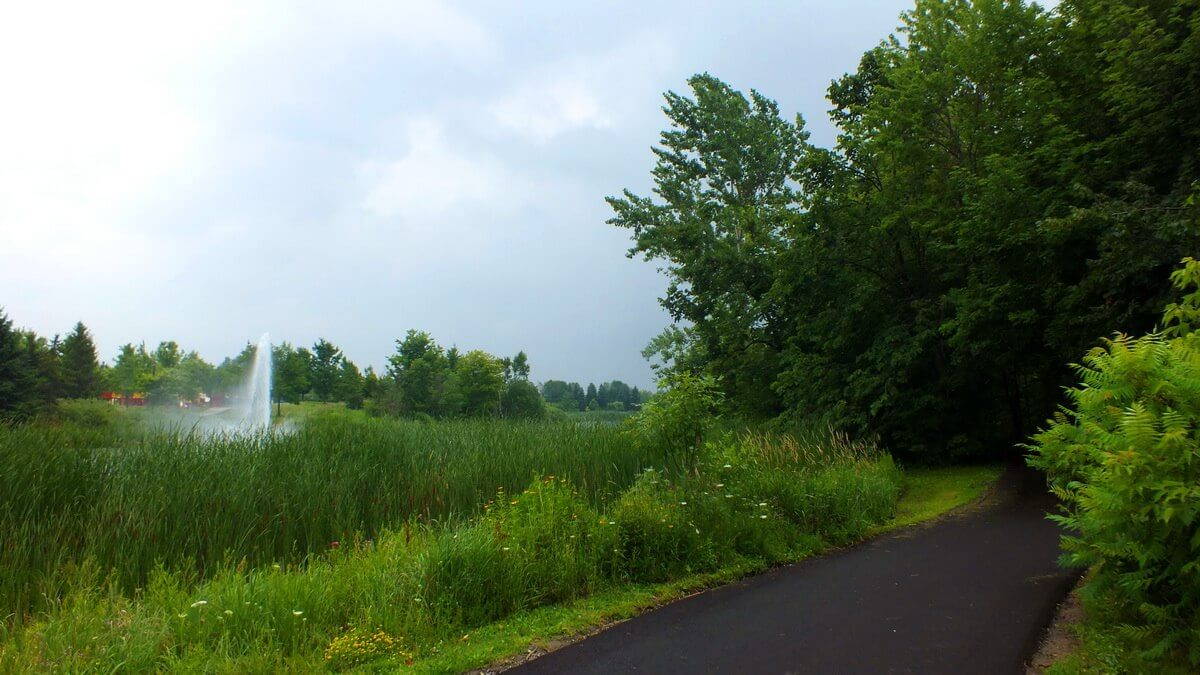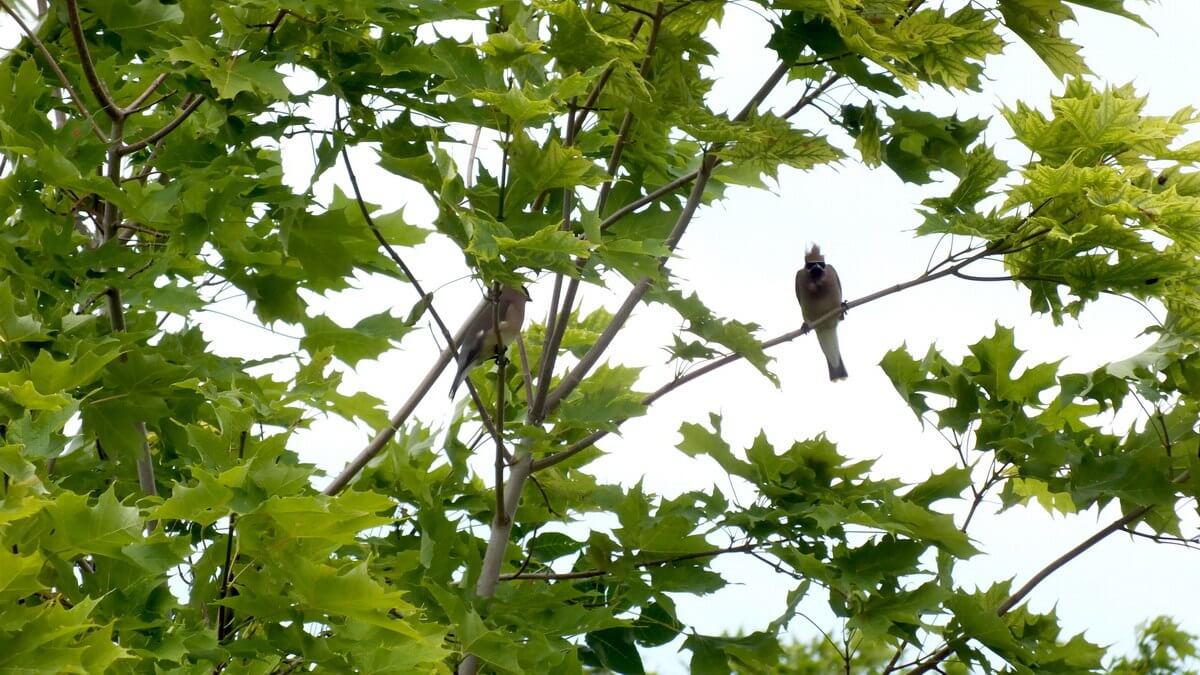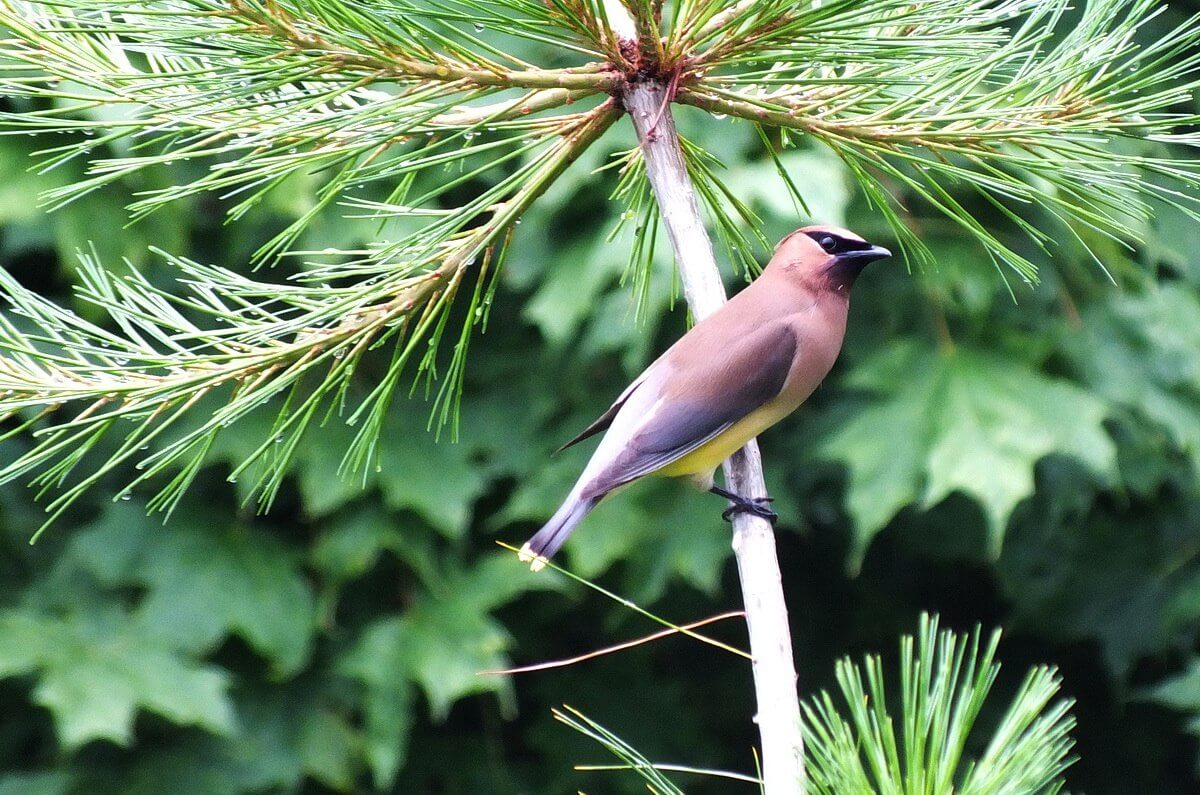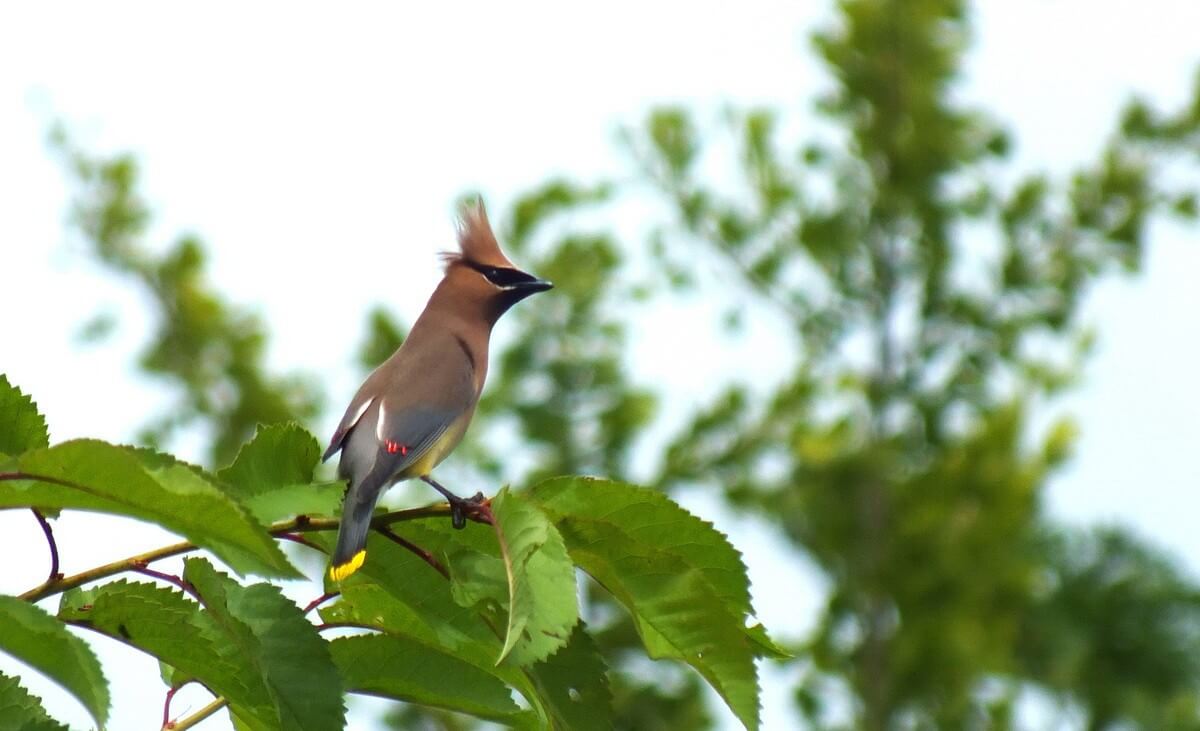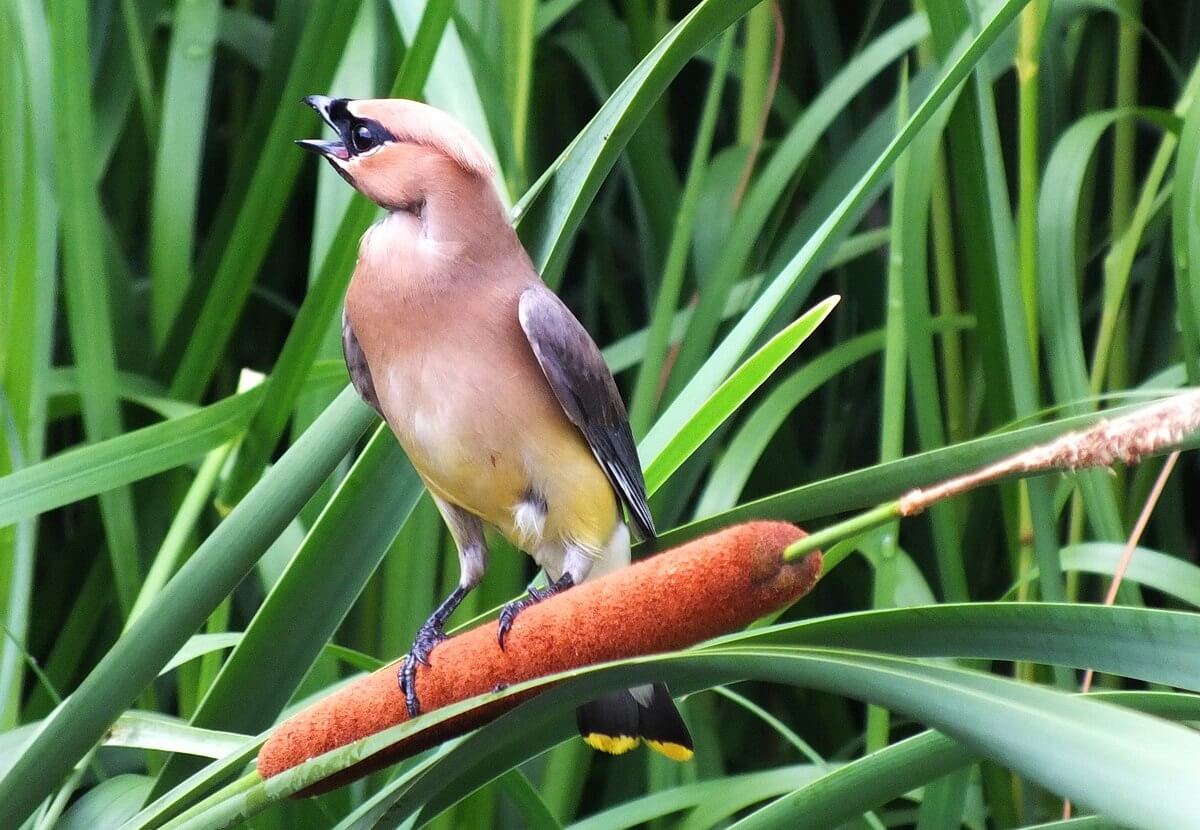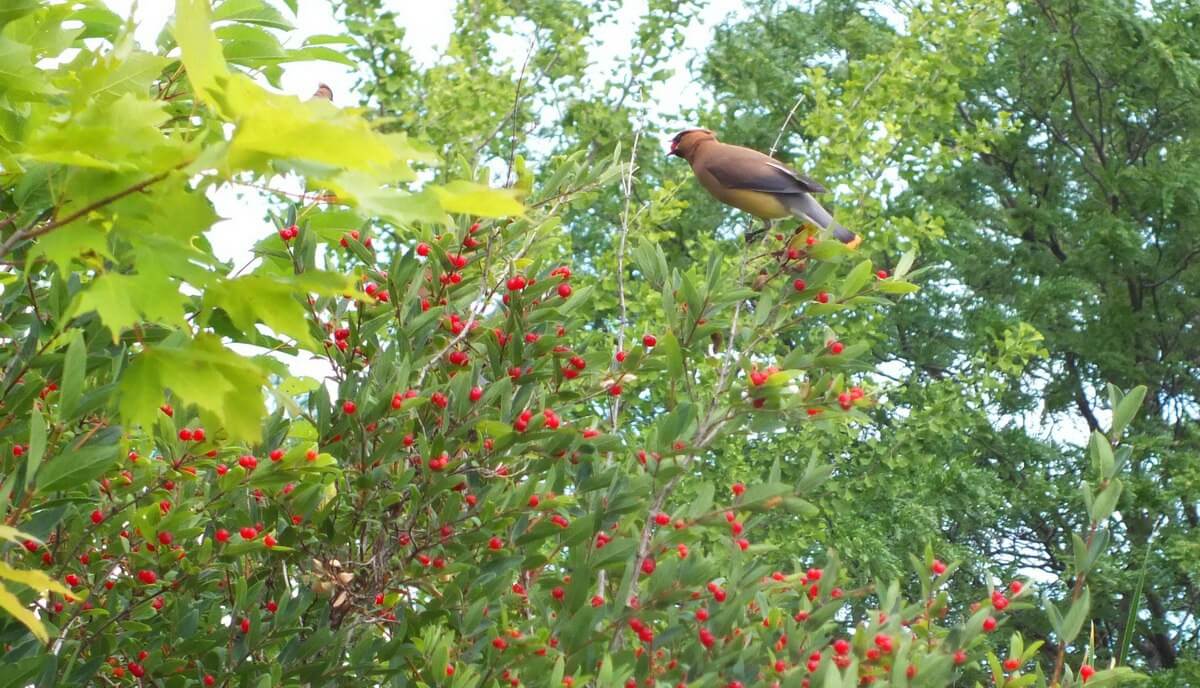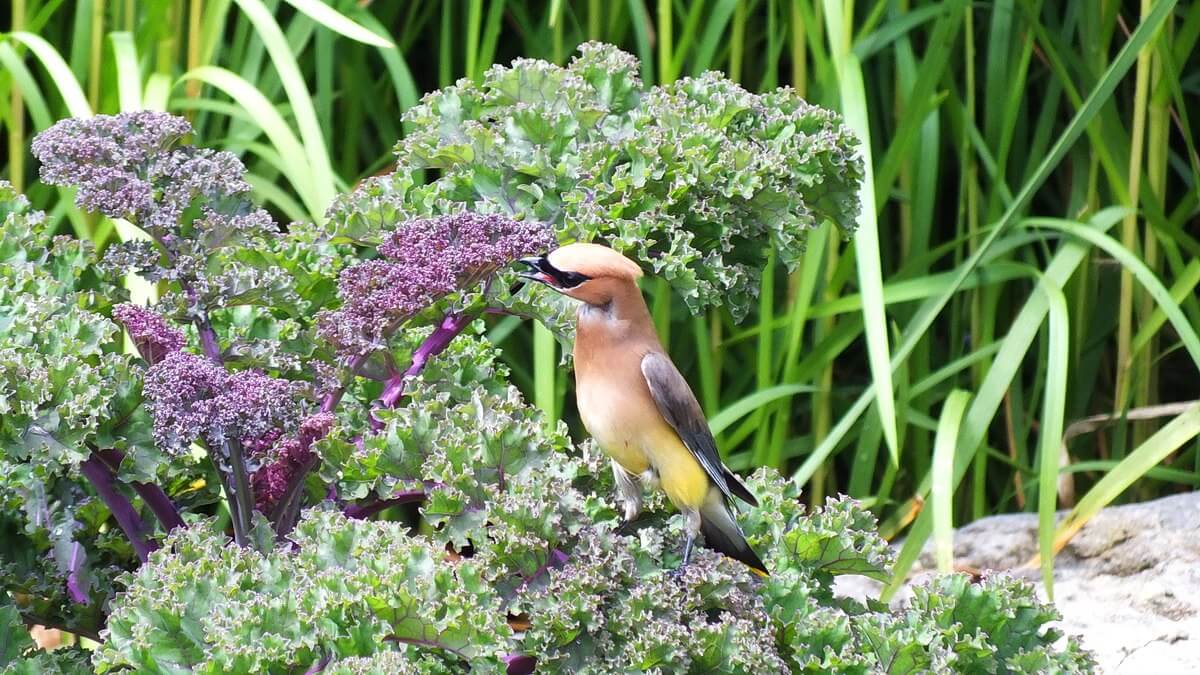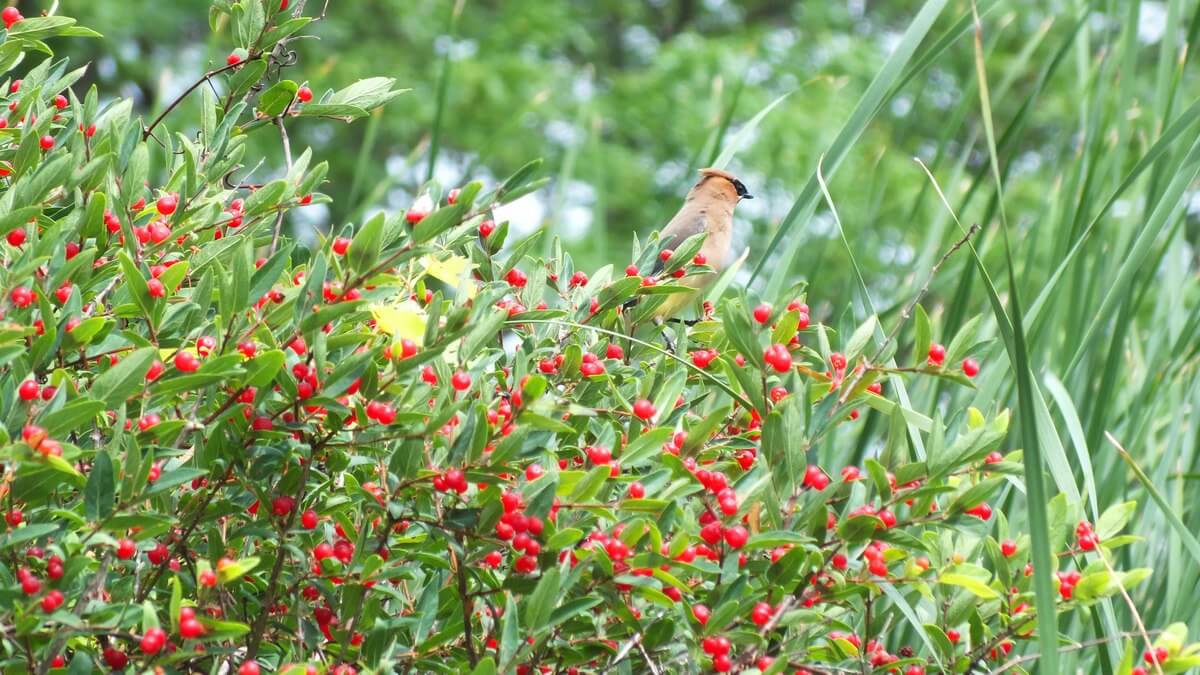Cedar Waxwings Capture Insects In A Toronto Park
Bob and I take regular walks in a local park in Toronto, Ontario, Canada, because we find that the variety of habitats found there encourages an assortment of birds and animals at any given time of the year. One walk we were stunned by the numbers of cedar waxwings we sighted.
When first we arrived at the park, we were drawn to the southern perimeter of that largest pond where two or three Cedar Waxwings were flitting amongst the tree branches along the forest’s edge. It was no surprise to find them there so close to the pond since Waxwings are attracted by the sound of running water, and there is a constant spray from the fountain in the pond.
The Waxwings were hard to catch up with because they were so busy darting out over the water’s surface to capture insects. As we looked on, the birds would take brief rests in the forest canopy.
We patiently waited for one of the elegant birds to land in closer proximity to ourselves.
We were ecstatic when one of the waxwings gave us a good view of its sleek plumage, rakish black mask and the perky crest on top of its head. Setting off the cinnamon brown and grey feathers are the trademark yellow tip on the tail and bright red wax-like tips on the wing feathers.
At one point of dozen Cedar Waxwings swooped through the air over the pond, performing aerial twists and turns to take advantage of the bounty of insects that thrive next to the marshy shore.
Cedar Waxwings breed later in the season than any other birds in North America. This is strategic because fruit makes up the bulk of their diet, and as fruit crops ripen in late summer and early fall, it guarantees the birds a ready source of food.
In the flowerbeds adjacent to the stream that flows into the pond, the waxwings were feasting on a group of insects.
These birds are one of the few species that can survive on a diet that consists almost entirely of fruit. In fact, they can go months without eating any other type of food.
Early summer sees them feasting on strawberries and service berries, late summer offers up a choice of raspberries and cherries, while cedar and juniper berries, grapes and crab apples, and mountain ash and mistletoe berries constitute part of their winter diet.
As I stood quietly, one cedar waxwing scooped a berry into its mouth and then dipped towards the railing where I was standing. It came right at my face and, in the nick of time, turned suddenly in the air and darted up over my head. I could feel tendrils of my hair whisked aside by the wind from its wings.
There were too many of these birds in the vicinity of the pond for us to count.
Together with the pond where they love to bathe and drink, along with the abundant food supply, the cedar waxwings couldn’t be more ideally set up.
Frame To Frame – Bob and Jean


